Profitability analysis of cassava processing
Industry News / Chat online / Technical support / November 22, 2018
According to estimates, the annual production of 12,000 tons of cassava starch processing project, processing annual consumption of more than 48,000 tons of fresh cassava or 24,000 tons of dried cassava chips, annual sales income of more than 4.85 million US dollars, tax revenue of less than 290,000 US dollars, can be Cassava farmers directly generated more than 2.8 million US dollars, driving more than 10,000 farmers to increase production and income. At the same time, it can provide hundreds of jobs for the society. Processing starch from cassava is a high profit project.
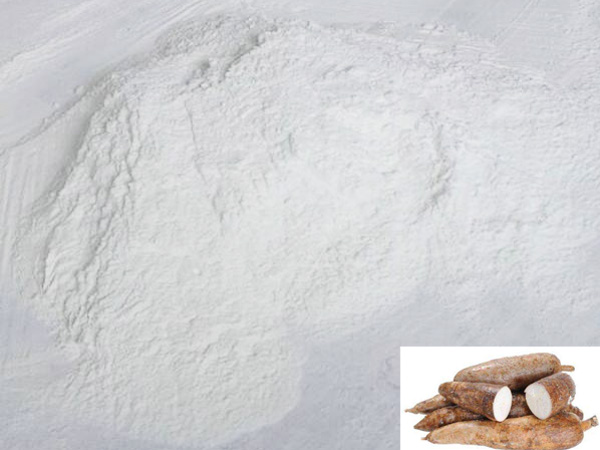 Cassava and cassava starch
Cassava and cassava starch
A. Cassava starch market analysis:
As a starch-rich root crop, cassava is listed as the world's three largest potato crops along with potato and sweet potato. Cassava is currently grown in more than 70 countries around the world. According to statistics, in 1999, the world's cassava planting area was 16.58 million hectares, and the total amount of fresh cassava production was 166 million tons. The world's largest producer of cassava is Nigeria, with more than 33 million tons, followed by Brazil, Thailand, Indonesia, and the Democratic Republic of the Congo. At present, starch is used more and more widely, whether it is industrial, pharmaceutical or food is an indispensable raw material, and starch is the most basic, most important and most economical processing product of cassava. As a basic raw material, starch is widely used in food, medicine, paper, textile, oil drilling, building materials, feed and other fields. At present, China's cassava starch production accounts for about 10% of the annual starch production, with an annual output of about 600,000 tons, and the market price of cassava starch is between 405 and 485 US dollars, because of the large quantity demand, China is a large importer of cassava starch. With the emergence of new technologies and new materials using starch as raw materials, high-tech industries with starch as raw materials are continuously formed. cassava starch products market demand has great potential and the prospects are very broad.
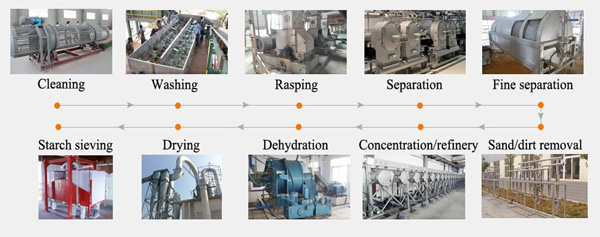 Cassava starch processing machines
Cassava starch processing machines
B. Analysis of the prospect of deep processing of cassava:
There are three main types of deep processing products of cassava starch: one is modified starch, which is widely used in textile, paper, medicine, food, building materials, foundry, light industry, petroleum, energy, feed, agriculture, environmental protection, bioengineering, etc. Chemical products, organic chemicals produced from cassava starch are alcohol, polyethylene, acetic acid, ethylene oxide, sorbitol, ethanolamine, citric acid, etc., which are important for the production of rubber, pesticides, oils, packaging, cosmetics, and military products raw materials, especially fuel ethanol, are added fuels in gasoline, and the market potential is considerable. The third is starch sugar, cassava starch can produce glucose, fructose, maltose, oligosaccharides, trehalose and other dozens of different sweetness of syrup, is an emerging health food, has a strong market competitiveness.
As an international trade product, cassava is mainly cassava chips and granules. The world's import and export volume is 6 million tons. At present, the annual output of world modified starch is close to 6.9 million tons, including about 3.4 million tons in the US, 2.6 million tons in the EU, and 360,000 tons in Japan, about 550,000 tons in Thailand and 350,000 tons in China. At present, the annual output of paper and paper products in the United States is 83 million tons, and the annual use of modified starch is 1.58 million tons, accounting for 2.3% of paper production. The annual output of paper and paper products in China is about 30.8 million tons, the starch costs is 160,000 tons. With the adjustment of the paper product industry's product structure, that is, the proportion of medium and high-grade paper products continues to grow, newsprint, cultural paper, office paper, copper paper, telecommunications paper, corporate paper and cardboard are long-term development varieties, so the amount of modified starch is also increasing, and the demand for cassava starch is also increasing. Modified starch is also used as a binder in feeds, it is used in an amount of about 25% of feed, and is also widely used in building materials, petroleum industry and pharmaceutical industry.
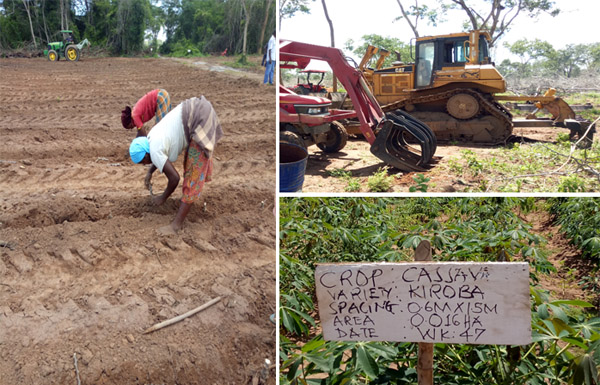 Cassava planting in Nigeria
Cassava planting in Nigeria
Compared with other starches, cassava starch has its unique irreplaceable properties in physicochemical properties, such as cassava starch with low non-starch impurities (cassava starch contains only 0.1% protein, while corn starch is 0.35%), gelatinization temperature. Excellent physical and chemical properties and processing characteristics such as low viscosity, high viscosity, stable and transparent mucus, good film formation and strong permeability. Therefore, in practical applications, cassava starch has a greater advantage than corn starch and potato starch.
C. Analysis of market prospects of starch products:
The annual output of starch in the world was more than 7 million tons in the mid-1970s, and increased to more than 18 million tons in the mid-1980s. In the early 1990s, it reached more than 20 million tons, and now it has exceeded 30 million tons. The US starch production ranks first in the world, reaching 16 million tons. It is mainly based on corn starch and is mainly used to produce starch sugar and modified starch. The annual output of EU starch is more than 4 million tons. The main varieties are potato, wheat and corn starch. Processing starch sugar, modified starch, sorbitol and other deep processing products; Japan's annual output of starch is more than 2 million tons, mainly corn and potato, used to produce starch sugar, modified starch and food industry raw materials; annual output of Thai starch It is 1.5 million tons, all of which is cassava starch. It is mainly used for export and processing of modified starch, monosodium glutamate, starch sugar, etc.; cassava starch in Brazil, Colombia and other countries cannot be exported due to high production cost and high price. The annual output of Chinese starch has reached more than 5 million tons, of which corn starch accounts for about 86%, cassava starch accounts for about 8%, and other potatoes, cereals and wild plants take up 6% of starch. China's starch consumption structure is roughly: 30% for MSG, 20% for medicine, 20% for deep-processed products, 15% for food, packaging, and commercial, and 15% for others. The annual production of corn and potato starch processing plants in the United States and the European Union is on the scale of more than 100,000 tons to hundreds of thousands tons. The annual output of cassava starch in Thailand is between 50,000 and 150,000 tons.
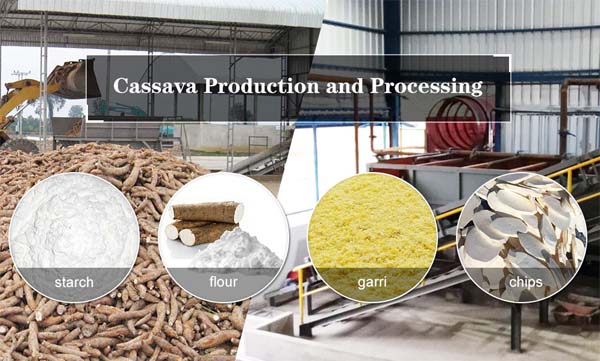 Main cassava processing products
Main cassava processing products
As we all know, Thailand is a big country in the production and export of cassava starch. Let's roughly calculate the production cost of Thai cassava starch. It is known from Wuming Cassava Starch Factory that about 3.8 tons of fresh cassava can produce one ton of cassava starch, and the cost of producing one ton of cassava starch is: 50*3.8+90+30=310 USD/ton. $50 is the price of cassava raw materials, $90 is the processing fee (including taxes) and other related expenses for producing 1 ton of cassava starch, and $30 is the profit margin of the manufacturer, which roughly measures the production of one ton of cassava starch by the Thai starch factory. The cost is $310 per ton, and the current price of Thai cassava starch is $410/tonne (FOB price), which shows that the profit margin of traders is very large. Thailand now exports better agricultural products and foods. cassava starch has become a pillar industry in Thailand. The export price of cassava starch directly affects its national income and tax revenue. Most of Thailand's cassava starch is exported to China.
Cassava production and processing has good profitablity. As a crop, cassava has advantages in production, such as high yield per unit area, drought tolerance and adaptation to poor land, and great flexibility in planting and harvesting. It is highly competitive as a source of starch extraction. Its roots contain more starch than almost any other food crop, and the starch extraction technology is simple to operate. The export price is always lower than the EU, US, potato, corn and wheat starch, therefore, cassava starch has a strong competitiveness in the international market.
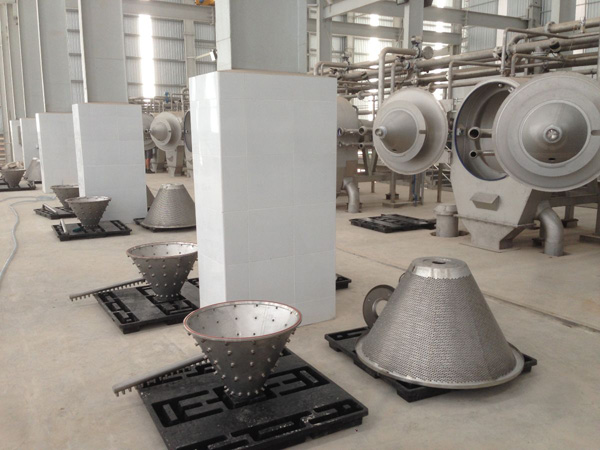 Cassava starch machines manufacturing
Cassava starch machines manufacturing
As a program promoted by IFAD and FAO, the Global Cassava Development Strategy recognizes the importance of processing fresh cassava roots within a market-driven commodity chain to produce by-products such as starch. However, although global demand for cassava has increased over the past 25 years, only in Thailand, cassava has completed the conversion of staple foods to processing products and raw materials in industrial production. In Africa, which produces more than 100 million tons of cassava roots per year, there is almost no starch extraction industry except Nigeria and South Africa. “In most countries in tropical Africa, cassava root is a basic staple food, an important reserve for other crop failures and an increasingly economic crop for the urban market,” Root and tuber crops at FAO's crop and pastures. Although the starch imported by some countries can be produced locally by cassava, its government has not been able to adjust its policies to encourage the production of cassava starch. But in any case, the prospect of the cassava processing market in Africa is very good. Doing Company has an office in Nigeria and also go to African countries to participate in exhibitions and visit customers. African countries consumption quantity for cassava products (mainly the starch, cassava flour and garri) is very large, and cassava starch is consume and growing is large in Africa and elsewhere.
Finally, you also can click how profitable is garri business to get more information of the profitability of cassava processing.
contact us
- Do you want to buy machine?
- Yes, I want to buy machine
- No, I want to learn more in advance.
- What is your raw material?
- Cassava
- Potato
- Sweet potato
- Others
- 2. What is the final product you want to produce?
- Garri
- Cassava flour
- Cassava starch
- Cassava chips
- Attiekie
- Bammy
- Others
- 3.What is your capacity plan?
- Small scale garri machine
- 1ton per day
- 2tons per day
- 3tons per day
- 10tons per day
- 20tons per day
- Others
- 3.What is your capacity plan?
- Small scale
- 5tons per day
- 10tons per day
- 20tons per day
- 50tons per day
- 100tons per day
- Others
- 3.What is your capacity plan?
- Small scale
- 5tons per day
- 10tons per day
- 20tons per day
- 50tons per day
- 100tons per day
- 200tons per day
- 300tons per day
- Others
- 3.What is your capacity plan?
- Small scale
- Middle type
- Large scale
- What is your capacity plan?
- Small scale
- 5tons per day
- 10tons per day
- 20tons per day
- 50tons per day
- 100tons per day
- 200tons per day
- 300tons per day
- Others

 Call us
Call us Chat online
Chat online
